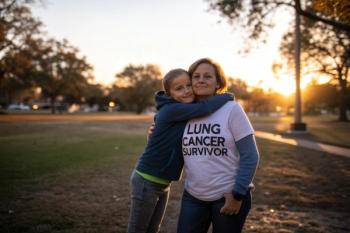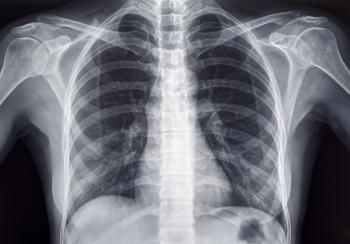
Physical Fitness is Key for Better Outcomes in Advanced Lung Cancer
In a new study of patients with metastatic non-small cell lung cancer, researchers found that patients who were more physically fit had better outcomes.
With lung cancer claiming around 1.8 million lives each year, better ways to guide prognosis and treatment are needed, especially in the most common form, non-small cell lung cancer (NSCLC). NSCLC often brings a high burden of symptoms and physical challenges, with most patients diagnosed at advanced stages. Physical performance has a well-known impact on survival in many diseases, and researchers are now looking at how this might apply to NSCLC.
The new study also aimed to explore whether body composition could serve as a predictor of survival in NSCLC patients and identify potential blood-based factors affecting muscle function. Physical performance is closely tied to muscle function, which supports stability and movement. Around half of NSCLC patients experience severe muscle wasting, known as cachexia, which limits treatment options and worsens prognosis.
The research involved a cohort of 55 patients with metastatic NSCLC and seven age-matched controls. Patient assessments included evaluations of their physical performance, body composition (which includes factors like muscle mass and body fat), quality of life, and overall survival rates. Additionally, plasma samples and muscle cells were collected from a sub-cohort of 18 patients for exploratory studies involving metabolomic analysis. This examines various metabolites (small molecules) present in the blood, aiming to identify molecules that could serve as markers.
The researchers observed that NSCLC patients with higher physical performance survived significantly longer than those with lower performance.
The new study also aimed to explore whether body composition could serve as a predictor of survival in NSCLC patients and identify potential blood-based factors affecting muscle health. In the sit-to-stand test, which counts how many times a patient can move from sitting to standing within a set time, high performers showed a 256% higher survival rate. Lastly, in the six-minute walk test, high performers had a 323% increase in survival. Unlike physical performance, body composition did not show a significant link to survival rates.
In terms of how plasma samples affected primary muscle cells, the researchers found that plasma from NSCLC patients with low physical performance had a drastic decline in muscle cell functions, including a 54.2% reduction in oxygen consumption rate and a 44.9% decrease in cell proliferation. They also identified a list of specific metabolites present in the plasma of patients with low physical performance.
Overall, these findings show the importance of physical performance as a potential prognostic factor for overall survival in NSCLC patients, which may help guide treatment decisions. This research also highlights how metabolic changes related to low physical performance may impair skeletal muscle function.
In an email interview, Silva shared what he described as two critical implications of this study:
“The first [implication] is for managed care professionals and clinicians: Simple clinical performance tests can be used to select patients who will withstand chemotherapy,” Silva said. “The second is for patients: [Regardless] of your body composition status, focusing on physical performance improvement can help you during and after the treatment.”
Newsletter
Get the latest industry news, event updates, and more from Managed healthcare Executive.


















































